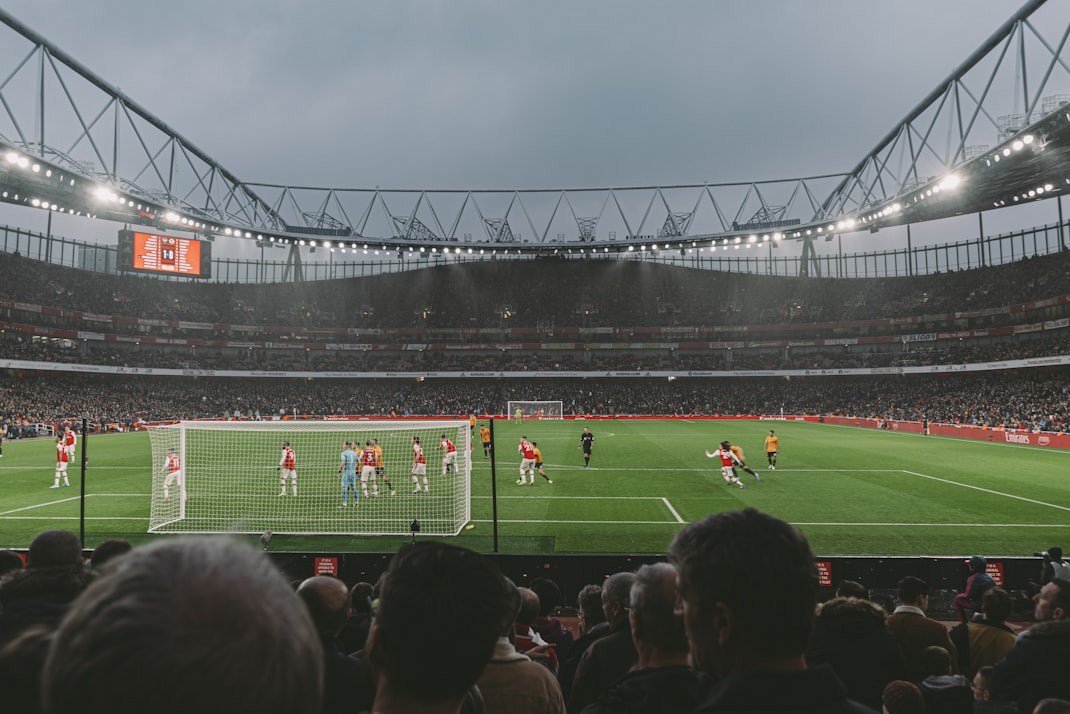Although football has a long and illustrious history, modern technology is changing how we experience the action. Football has led the way in technology advancements in recent years, which is completely changing how players practice and compete.
Football is entering a new age with its technological integration. It is transforming the sport in several ways. Fans are getting a more immersive experience and decision-making precision is increasing thanks to technology. Technology has a significant and varied influence on football fields.
Just like the innovations of sports betting not on gamstop are shaping gambling, technological innovations are now also shaping the future of football. So, what will world football look like in 2024 and beyond?
Tracking of player performance
More than ever, football teams are starting to use performance-tracking tools and data-driven solutions. Teams may now track an athlete's work rate, passing precision, and shooting proficiency throughout practice and competition thanks to technology. This offers an analysis that is far more thorough than what was previously accessible.
Teams can measure the exact distance traversed in each game thanks to GPS trackers that are installed in vests. Even tactical actions like firing and passing may be tracked at enhanced speed. Coaches and recruiters may evaluate individuals individually thanks to the degree of detail. This generates useful information that affects scouting or lineup choices.
Coaches may decide more effectively how they'd like their players to perform on the field thanks to this data-driven method. Also, it gives them access to possibilities that would not have been possible otherwise, strengthening their competitive edge.
Virtual reality training
Football players are hardly an exception to the growing influence of technology on their training regimens. Training in virtual reality has created amazing opportunities. Football players may now enter a virtual area and hone their talents in a match simulation that closely mimics the real thing.
With the current state of VR technology, instructors may now offer customized, immersive practice sessions. This enhances the decision-making and physical growth of the gamer. It also gets rid of the necessity for repetitive drills or cycles.
This not only lessens player fatigue but also enables better performance with shorter training sessions. Even if virtual reality training is still in its infancy, it is obvious that its potential as a useful tool might have a lasting impact on the professionalization of football.
In-game technology
Goal-line technologies are now a standard feature of top contemporary football, greatly enhancing the game itself. Cameras play a critical role in determining whether or not a ball crosses the goal line and qualifies as a goal.
Soccer decision-making has been completely transformed by VAR since its debut. By using video footage and a listening headset, referees may confer with video operators using this technology, which improves game fairness and precision.
One area in which technology may yet spread is in the utilization of robotic assistant referees. Indeed, the latest FIFA Club World Cup saw the piloting of robotic assistance referees.
Tracab, a system created in Sweden, is a good example of these robots. Along with limb monitoring and skeleton modeling, it utilizes AI-driven ball tracking. The precise time of a crucial ball pass as well as the precise position of each player and their limbs in relation to the goal line may be ascertained by it.
Smart wearables
Smart Wearables are one of the newest developments in the football industry. This kind of technology makes it possible to analyze each player's performance on the field in more detail. It is capable of monitoring information like heart rate, calories burned, and journey distance. You can better understand how your players are functioning as a coach and make the required modifications.
In addition, smart wearables can provide insightful data on game recovery times. Players can play at their best all season long because of this. Smart wearables are just one more example of how technology is transforming soccer and making it more accessible to people worldwide.
Injury predictions
To maintain a football player in peak condition, artificial intelligence is utilized to find those crucial marginal performance advantages. It also helps to forecast the potential timing of an injury.
For instance, the Zone7 artificial intelligence technology is currently in use by more than 50 football clubs worldwide. The software uses information from wearables, fitness tests, and medical profiles to identify athletes who may be more susceptible to injury.
The technique shows a player's daily risk level as green, yellow, and red indications. This provides coaches with information on when to reduce training intensity.
Zone7 has generated recordings of an estimated one million training sessions so far. 75% fewer injuries are occurring as a result of the technology, which is attaining 95% accuracy.
Enhanced fan experience
The way football spectators interact with the game has changed as a result of technology's influence on football pitches. Huge screens at stadiums are designed to provide interactive content, different camera angles, and quick replays. Spectators may become fully immersed in the action by examining pivotal moments from many angles. This improves their comprehension of the game.
Fans may now get a closer look at the action thanks to virtual reality experiences, smartphone apps, and social media platforms. You can check out statistics, take part in conversations, and become closer to your favorite players and teams.
Virtual ticketing solutions are also being added to traditional ticketing systems. To watch live match streaming from the comfort of your home, you may buy virtual tickets. Due to the worldwide audience it reaches, this presents clubs with new income potential. It includes supporters who, because of travel restrictions, would not be able to physically attend matches.
Consistent revenue is also generated by streaming services that need a subscription. Live matches, on-demand replays, and access to special material are all paid for.
Final Thoughts
Technology's influence on football fields attests to its capacity to improve the sport's impartiality, analysis, and fan interaction. Football is changing through technological innovations in many ways.
This ranges from VAR guaranteeing correct choices to data-driven insights supporting player performance optimization. It's critical to find a balance between utilizing technology's advantages and maintaining the spirit and purity of the beautiful game as the sport embraces technology.



















